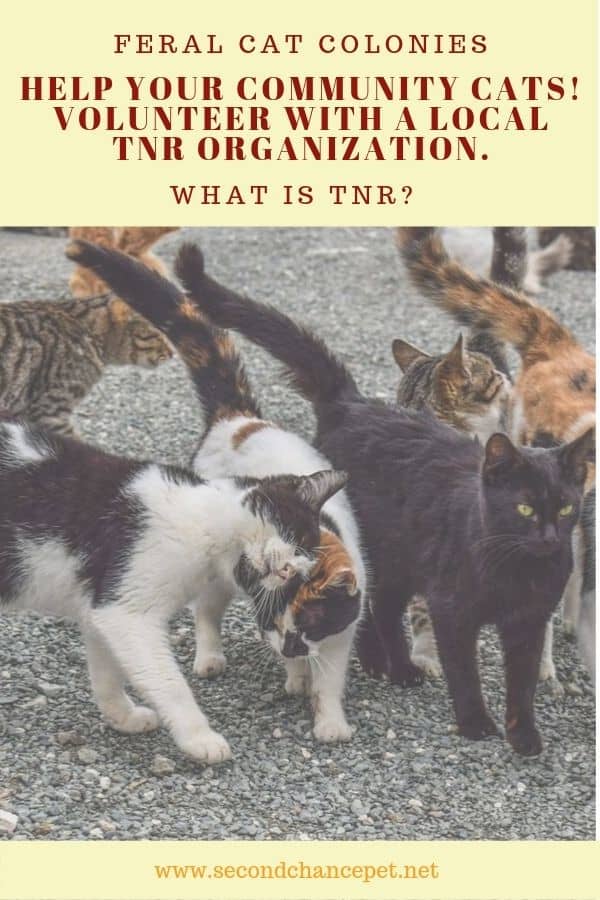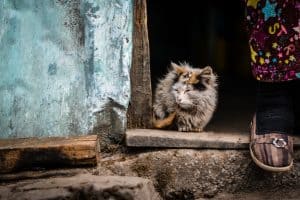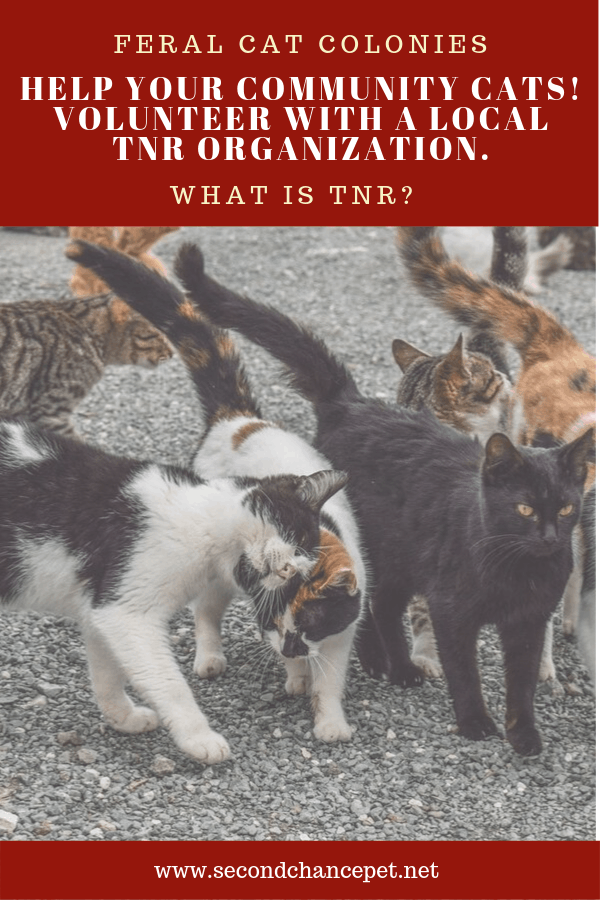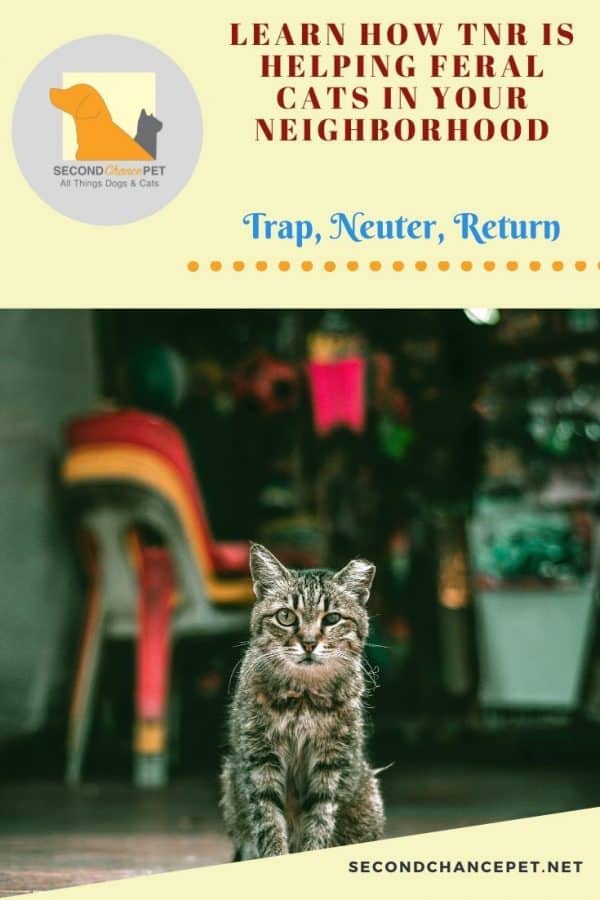Blog

The feral cat problem. These words conjure up hordes of cats damaging neighborhoods, defecating in children’s sandboxes, spreading disease to domesticated felines. But it doesn’t need to be that way. Dedicated volunteers from TNR organizations work hard every day to mitigate the concerns of homeowners and make life for feral cats easier and healthier.
WHAT IS TNR?
TNR is short for trap, neuter, and release. Feral cat colonies are a problem in many neighborhoods. These colonies, left unchecked, can grow very large. They leave cat feces on homeowner’s properties, disrupt local wildlife, and raise concerns about contagious diseases. TNR is a program, carried out by local volunteers across the country. Unsocialized cats are trapped, taken to a veterinarian to be neutered or spayed, vaccinated against contagious diseases, and returned to the original colony. Some, of course, living in the elements as they do, will be too ill to save, and will be humanely euthanized at the veterinary office.
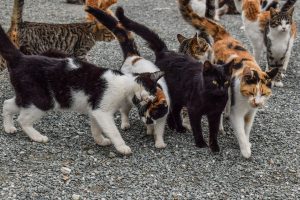
WHAT CAUSES CATS TO BECOME FERAL?
Honestly, humans are responsible for much of the stray cat population. Of course, some cats get lost from loving owners, and end up joining a feral colony. But, for the most part, these are cats who were dumped, unfixed, by owners, or born to one of those females already in the colony. If everyone who had a cat would spay or neuter, and TNR groups could go into existing colonies to perform their work, the feral cat problem would naturally disappear within a decade.
Feral cats are those born in the wild. Never interacting with humans except to flee, they’ve likely never heard a kind word. And never known a loving touch. And, although cats are hunters, they’re also prey for larger animals – hawks, foxes, coyotes, etc. The lifespan of a feral cat is dreadfully short – nothing like our pampered pets at home.
HOW DO TNR ORGANIZATIONS FIND THE COLONIES?
Often the feral cat problem starts out with very small colonies, and one or more cat-lovers take it upon themselves to provide food, and maybe, shelter. However, they don’t think to spay and neuter, or don’t have the funds, and cats are prolific breeders.
One female cat can have up to three litters a year – consisting of an average of four kittens each. Not only can she continue this breeding rate throughout most of her life, you then have an additional 12 kittens to count as breeding. If half are females, that’s another six cats each having 12 kittens a year – or 72 kittens. Given that female cats can breed as young as six months, the numbers quickly become not only overwhelming, but staggering.
Soon, the person feeding the colony becomes unable to keep up and the neighbors start complaining. This is often when someone suggests shooting the cats. Thankfully, kinder hearts usually prevail and someone contacts the local Trap, Neuter and Release organization. That’s when these loving souls step in and perform the “boots on the ground” work so heartrending but necessary in animal rescue.
GETTING PERMISSION
The first item of business for a TNR group is to get permission from the landowner to trap on their property. If no permission is given, no trapping can take place. In the case of a housing development, the community association will need to be involved.
Once permission is given, the investigation of the colony and the trapping begins. It’s very helpful to know the number of cats in the colony so that needed supplies can be available on trapping day.
TRAPPING THE FERALS
Although not always possible, best practice is to trap all the cats in the course of one day. Cats are intelligent creatures, and repeated exposure to the traps will cause avoidance. So, the faster the trapping is done, the more successful it will be.
TNR organizations usually own several traps, and borrow others from local veterinarians, Animal Control, or private shelters. The goal here is to trap as many of the cats as possible so they can be transported to a local veterinarian. They will then be vaccinated against rabies, and sometimes FiV and other diseases, spayed or neutered, and left in the cages or traps to recover. Ear-tipping, a painless procedure where the tip of one ear will be removed, ensures the same cat won’t be trapped over and over.
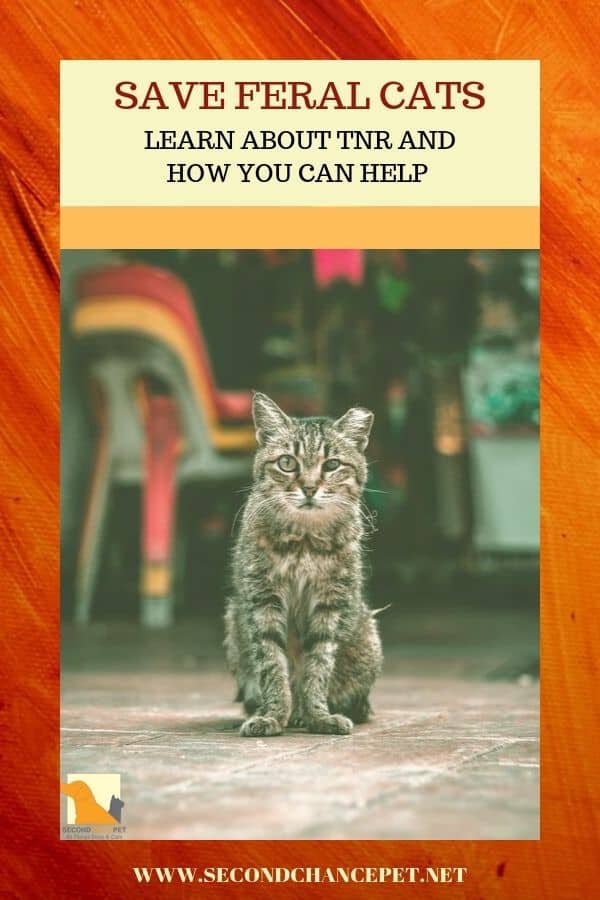
HOW CAN TNR ORGANIZATIONS AFFORD THE COST?
Many local veterinarians give rescues and TNR organizations a discount of 15% to 20% off the regular bill, but even that becomes cost prohibitive when dealing with multiple feral cats.
Non-profit veterinary clinics have sprung up in several areas, offering at-cost services for TNR groups and other rescues. The one local to me is Promise Animal League, which offers basic spay and neuter services, vaccinations, and a few other services for a nominal fee. These organizations are a lifeline for TNR. Without them, many colonies would be euthanized instead of helped.
Like any other non-profit, TNR organizations raise money through events, direct mail campaigns, and their Facebook pages. If you love cats, consider donating to one of these groups.
THE SAD TRUTH ABOUT THE FERAL CAT PROBLEM
Feral cats, due to their lack of protection from predators, traffic, the weather, and other dangers, are often sick. Litters born to sick females rarely thrive, and, often tiny kittens are killed by tomcats looking to mate with their mother. The volunteers who handle TNR are often faced with the heartbreaking choice of agreeing to the euthanization of many cats in a colony.
These cat lovers will take in kittens that seem ill and foster them in their own homes. These kittens, if they survive, captured early enough in their lives, become tame and are adopted to permanent, forever homes. On some occasions, even the adults can be rehabilitated as house pets. But, for the majority of adult cats, life in a home is not possible. Those animals, now unable to bring more kittens into the world, are released back to the colony to live out their lives. Because they’ve been vaccinated, they’re more likely to remain healthy. They also will not bring any health hazards to their human neighbors.
WHAT IF NEW CATS ARRIVE TO THE COLONY?
Unfortunately, areas with feral cat problems often attract humans who want to dump their own cats. Since someone who would dump a pet is unlikely to have spent the money to sterilize their animal, the problem, if not monitored, can start all over again. Usually, the person who originally started feeding the colony, will keep an eye open for new cats arriving. She then calls the TNR organization again, describing the new cat(s), so they, too, can be trapped and neutered or spayed.
WHAT ABOUT THE DAMAGE TO LOCAL WILDLIFE?
A few organizations, such as the American Bird Conservancy, have come out against TNR as a solution to the feral cat problem, citing damage to local wildlife, such as birds. However, most of these colonies have human caretakers who feed the cats, thereby limiting their need to hunt. As time goes by, and cats pass away through accidents or old age, the colony gets smaller, as does its effect on the environment.
Because the feral cat problem is mostly human-caused, we bear responsibility for the burden it places on society. It is illegal to kill cats, and unethical to euthanize healthy animals. Trap, Neuter and Release offers the best solution – and the most humane. The condition of the cats in these colonies shows us how important it is to spay and neuter your pets. If the majority did this as a matter of course, the feral cat problem would slowly fade into history.
Don’t get a cat, if you consider your pet to be disposable. Although cats fare better without humans than dogs do, it is a miserable life, and a short one. Spaying one female cat will prevent approximately 62 kittens from being born over the course of a six-year lifespan. (Six years is an average for feral cats.) Please spay and neuter – your cats depend on you to allow them to live their best lives.
MY THANKS
To Tina of Mountain Cats TNR for answering my questions – and for helping over 600 cats and kittens!
To Sue and Linda of Neighborhood Cat for also answering my questions – and their organization which provides such wonderful assistance to feral cats.
FOR MORE INFORMATION ABOUT THE FERAL CAT PROBLEM AND TNR
Please visit Alley Cat Allies website. And, if you find a local TNR rescue near you, please volunteer. If you don’t find a local organization, consider starting one – it’s hard work, but very rewarding.
Photo of ear-tipped cat outside café by Lily Banse on Unsplash
Photo of feral gray and brown cat by Mukesh Jain on Unsplash
Cat colony photo Dimitris Vetsikas from Pixabay
